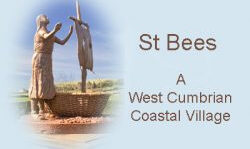19th Century
The 19th Century saw a rejuvenation of both the spiritual and material fabric of the Priory. In 1816 the first Church of England Theological college outside Oxford and Cambridge was established at St. Bees. This remarkable story is described in more detail on this web site on the page St Bees Theological College, 1816 – 1895.
It was the brainchild of Bishop Law of Chester, whose father had been Bishop of Carlisle. The Lowther family, made rich by their exploitation of the Whitehaven coal, offered to restore the ruined Chancel of the monastic church to make a lecture room, and donated land for a vicarage. The parish priest would also be Principal of the new college.
The College grew from strength to strength, and new lecture rooms were built to meet the demand in the 1860’s, when the student numbers topped 100. At its closure the College had trained over 2,600 clergy for the ministry.
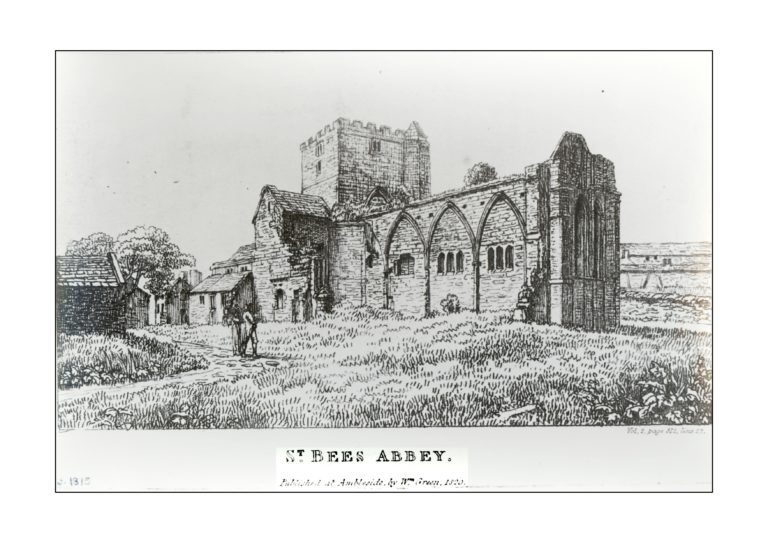
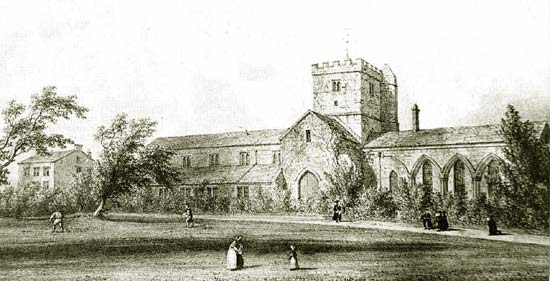
The Parish Church itself was restricted to the nave until 1855, when Canon Parkinson engaged one of the foremost architects of the day, William Butterfield, to restore the tower space and transepts. In 1855 a new floor was laid and the altar moved from the western to the eastern tower arch. The south transept wall was rebuilt and both transepts were re-roofed.
Canon Parkinson’s next project was installing a new ring of eight bells, but before they arrived in 1858 he died, and his successor, Rev. G. H. Ainger, had the immediate task of getting the bells into the tower. The Rev. George Henry Ainger was the son of the first Principal, William Ainger, and was to be known as the great builder of the College and restorer of the Priory. The installation of bells meant re-modelling the tower, and Ainger used Butterfield, who produced a striking Romanesque spire.
St. Bees was in the Diocese of Chester until 1856, when it was transferred to the Diocese of Carlisle – a logical and long overdue reform. St. Bees Parish had also included the large town of Whitehaven, and with the Diocesan reforms came the creation of separate church parishes in Whitehaven.
1865 was a year of major restoration for the Priory. The north and south aisles were rebuilt, and the new windows liberally filled with stained glass depicting Old and New Testament scenes. The present chancel was built, allowing the altar to be moved to its present location. The side aisle box pews were replaced and the flat ceiling was removed.
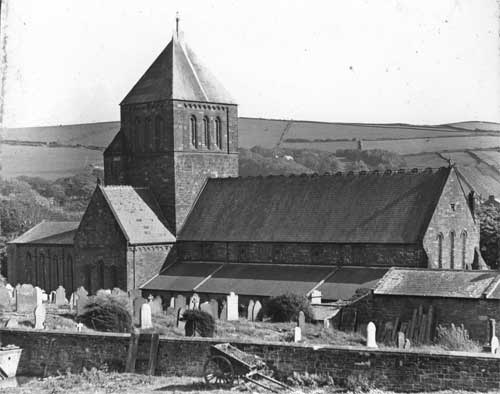
All of this work caused tremendous disruption to the church, and one scheme of improvement seems to have led to another. Finally, in 1869, the Archbishop of York formally opened the restored church. The Archbishop was a West Cumbrian, and the re-opening of the church was a grand occasion with a special train bringing him to the village, and people traveling from around the County.
The Interior of the Priory in the early 1860’s, showing the old gallery and the flat ceiling. Soon after this shot was taken, the gallery was removed to make way for the Priory’s first organ. The centre aisle was not created until the 1960’s.
The famous Hymn Composer J B Dykes, one of the founders of “Hymn Ancient and Modern”, wrote a delightful hymn tune called St. Bees (still in the Hymn books). We do not know if he was a student, but when asked why he named it thus, he said “It is in memory of many happy days spent there”. John Bacchus Dykes’ Hymn tune – St. Bees (Click to play)

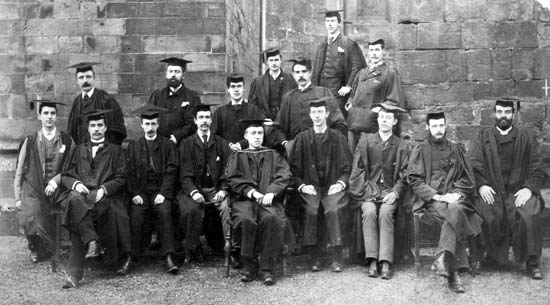
Group of Theological students in 1890.
The college closed just a few years later. Students were obliged to wear cap and gown when out and about in the village.
However, by the end of the Century, St. Bees College had been eclipsed by the numerous colleges that had sprung up using its example, and they were affiliated in some way to a university. Standards were rising, and in 1893 the Bishops of the Church of England agreed that a common entrance exam must be taken before non-graduates could enter a theological college. This dramatically affected the numbers at St. Bees as it channeled theological candidates down the graduate route.
In December 1895 at the end of term meeting, Canon Knowles, the Principal, accepted the inevitable and gave notice of the closure of the College, and the life of St. Bees Priory settled down once more to being a parish church under a new Vicar, the Rev Alexander.
